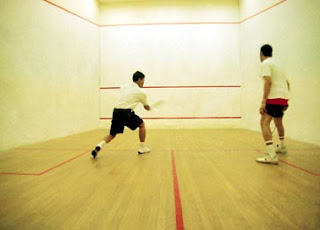Soccer is a sport plaed between two teams comprising of eleven players each with a spherical ball. The game is played on a rectangular
field of grass or green
artificial turf, with a
goal in the middle of each of the short ends. The object of the game is to score by driving the ball into the opposing goal. In general play, the
goalkeepers are the only players allowed to touch the ball with their hands or arms, while the field players typically use their feet to
kick the ball into position, occasionally using their torso or head to intercept a ball in midair. The team that scores the most goals by the end of the match wins. If the score is tied at the end of the game, either a
draw is declared or the game goes into
extra time and/or a
penalty shootout, depending on the format of the competition.
LAWS AND CONDUCTS
Under the Laws, the two basic states of play during a game are
ball in play and
ball out of play. From the beginning of each playing period with a kick-off until the end of the playing period, the ball is in play at all times, except when either the ball leaves the field of play, or play is stopped by the referee. When the ball becomes out of play, play is restarted by one of eight restart methods depending on how it went out of play:

A player takes a free kick, while the opposition form a "wall" in order to try to deflect the ball
- Kick-off: following a goal by the opposing team, or to begin each period of play.
- Throw-in: when the ball has crossed the touchline; awarded to opposing team to that which last touched the ball.
- Goal kick: when the ball has wholly crossed the goal line without a goal having been scored and having last been touched by a player of the attacking team; awarded to defending team.
- Corner kick: when the ball has wholly crossed the goal line without a goal having been scored and having last been touched by a player of the defending team; awarded to attacking team.
- Indirect free kick: awarded to the opposing team following "non-penal" fouls, certain technical infringements, or when play is stopped to caution or send-off an opponent without a specific foul having occurred. A goal may not be scored directly from an indirect free kick.
- Direct free kick: awarded to fouled team following certain listed "penal" fouls. A goal may be scored directly from a direct free kick.
- Penalty kick: awarded to the fouled team following a foul usually punishable by a direct free kick but that has occurred within their opponent's penalty area.
- Dropped-ball: occurs when the referee has stopped play for any other reason, such as a serious injury to a player, interference by an external party, or a ball becoming defective. This restart is uncommon in adult games.
MISCONDUCT
A
foul occurs when a player commits an offence listed in the Laws of the Game while the ball is in play. The offences that constitute a foul are listed in Law 12. Handling the ball deliberately, tripping an opponent, or pushing an opponent, are examples of "penal fouls", punishable by a
direct free kick or
penalty kick depending on where the offence occurred. Other fouls are punishable by an
indirect free kick. The referee may punish a player or substitute's
misconduct by a caution (
yellow card) or sending-off (
red card). A second yellow card at the same game leads to a red card, and therefore to a sending-off. A player given a yellow card is said to have been "booked", the referee writing the player's name in his official notebook. If a player has been sent off, no substitute can be brought on in their place. Misconduct may occur at any time, and while the offences that constitute misconduct are listed, the definitions are broad. In particular, the offence of "unsporting behaviour" may be used to deal with most events that violate the spirit of the game, even if they are not listed as specific offences. A referee can show a yellow or red card to a player, substitute or substituted player. Non-players such as managers and support staff cannot be shown the yellow or red card, but may be expelled from the technical area if they fail to conduct themselves in a responsible manner.
Rather than stopping play, the referee may allow play to continue if doing so will benefit the team against which an offence has been committed. This is known as "playing an advantage". The referee may "call back" play and penalise the original offence if the anticipated advantage does not ensue within "a few seconds". Even if an offence is not penalised due to advantage being played, the offender may still be sanctioned for misconduct at the next stoppage of play.


Malaysia's football achievement :
AFF Suzuki Cup 2010








































